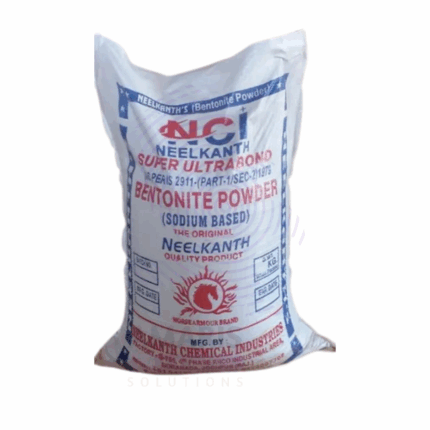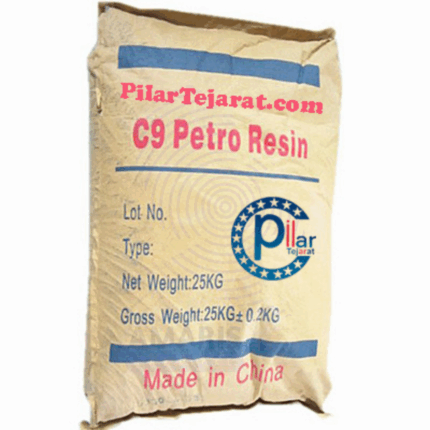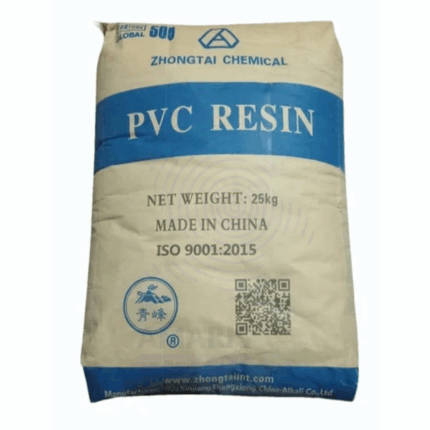Polywhite B Chinaclay
Polywhite B Chinaclay, commonly known as Chinaclay, is a naturally occurring, fine white clay mineral primarily composed of kaolinite. It is highly valued for its purity, whiteness, and fine particle size, making it suitable for a variety of industrial applications. Polywhite B improves texture, opacity, and durability in products and is widely used in ceramics, paper, paints, and rubber industries.
Polywhite B Chinaclay
Primary Uses
Ceramics Industry
Used as a key raw material in porcelain and fine china production.
Enhances whiteness, strength, and plasticity of ceramic products.
Improves thermal stability and firing characteristics.
Paper Industry
Acts as a coating and filler to improve paper brightness, smoothness, and printability.
Enhances opacity and reduces ink absorbency.
Paints and Coatings
Used as an extender and pigment in paints to improve whiteness and consistency.
Increases durability and resistance to abrasion.
Rubber Industry
Functions as a reinforcing filler to improve tensile strength and wear resistance.
Enhances processing characteristics and reduces production costs.
Secondary Uses
Cosmetics
Used as an absorbent and texturizer in powders and facial masks.
Provides a smooth, matte finish.
Plastic and Polymer Industry
Used as a filler to improve mechanical properties and reduce material costs.
Agriculture
Employed as a carrier for pesticides and fertilizers due to its inert nature.
Adhesives and Sealants
Improves viscosity and texture.
Basic Identification Attributes
Chemical Name (IUPAC): Kaolinite (Al2Si2O5(OH)4)
Common/Trade Name: Polywhite B, Chinaclay
CAS Number: 1332-58-7
HS Code: 2507.00.00 (Kaolin and other kaolinic clays)
Synonyms: China clay, Kaolin
Physical & Chemical Properties
Physical State: Fine powder
Color: Bright white
Odor: Odorless
Particle Size: Generally less than 2 microns
Specific Gravity: 2.6–2.65
Chemical Composition: Primarily Al₂O₃·2SiO₂·2H₂O (kaolinite)
pH: 4.5–6 (in aqueous suspension)
Moisture Content: Typically <1%
Safety & Hazard Attributes
GHS Classification: Not classified as hazardous
Toxicity: Non-toxic; inert material
Dust Hazard: May cause respiratory irritation if inhaled in high concentrations
Carcinogenicity: Not classified as carcinogenic
Storage & Handling Attributes
Storage Conditions: Store in a dry, cool place away from moisture
Container Type: Supplied in bags or bulk containers
Shelf Life: Indefinite if stored properly
Handling Precautions: Use dust control measures; wear masks in dusty environments
Regulatory & Compliance Attributes
Complies with applicable industrial standards for kaolin clay
Approved for use in cosmetics and food contact applications (subject to purity)
Environmental & Health Impact
Biodegradability: Naturally occurring mineral, inert and non-biodegradable
Ecotoxicity: Low environmental impact
Bioaccumulation: Not applicable
Carcinogenicity/Mutagenicity: Not hazardous
Safety Handling Precautions
PPE Required: Dust mask, gloves, and eye protection when handling powder
Handling Guidelines: Avoid inhalation of dust; use ventilation and dust extraction
Storage Measures: Keep containers sealed and dry
First Aid Measures
Inhalation: Move to fresh air; seek medical attention if respiratory irritation occurs
Skin Contact: Wash with soap and water; no adverse effects expected
Eye Contact: Rinse thoroughly with water; seek medical attention if irritation persists
Ingestion: Not toxic; rinse mouth if ingested accidentally
Firefighting Measures
Fire Hazards: Non-flammable
Extinguishing Media: Use standard firefighting procedures for surrounding materials
Special Precautions: None specific to material
Hazardous Combustion Products: None


 Preservatives(food)
Preservatives(food) Flavor Enhancers
Flavor Enhancers Acidulants
Acidulants Sweeteners
Sweeteners Antioxidants
Antioxidants Colorants(food)
Colorants(food) Nutraceutical Ingredients (food)
Nutraceutical Ingredients (food) Nutrient Supplements
Nutrient Supplements Emulsifiers
Emulsifiers
 Collectors
Collectors Dust Suppressants
Dust Suppressants Explosives and Blasting Agents
Explosives and Blasting Agents Flocculants and Coagulants
Flocculants and Coagulants Frothers
Frothers Leaching Agents
Leaching Agents pH Modifiers
pH Modifiers Precious Metal Extraction Agents
Precious Metal Extraction Agents
 Antioxidants(plastic)
Antioxidants(plastic) Colorants (Pigments, Dyes)
Colorants (Pigments, Dyes) Fillers and Reinforcements
Fillers and Reinforcements Flame Retardants
Flame Retardants Monomers
Monomers Plasticizers
Plasticizers Polymerization Initiators
Polymerization Initiators Stabilizers (UV, Heat)
Stabilizers (UV, Heat)
 Antifoaming Agents
Antifoaming Agents Chelating Agents
Chelating Agents Coagulants and Flocculants
Coagulants and Flocculants Corrosion Inhibitors
Corrosion Inhibitors Disinfectants and Biocides
Disinfectants and Biocides Oxidizing Agents
Oxidizing Agents pH Adjusters
pH Adjusters Scale Inhibitors( water)
Scale Inhibitors( water)
 Antioxidants(cosmetic)
Antioxidants(cosmetic) Emollients
Emollients Fragrances and Essential Oils
Fragrances and Essential Oils Humectants
Humectants Preservatives
Preservatives Surfactants(cosmetic)
Surfactants(cosmetic) Thickeners
Thickeners UV Filters
UV Filters
 Fertilizers
Fertilizers Soil Conditioners
Soil Conditioners Plant Growth Regulators
Plant Growth Regulators Animal Feed Additives
Animal Feed Additives Biostimulants
Biostimulants Pesticides (Herbicides, Insecticides, Fungicides)
Pesticides (Herbicides, Insecticides, Fungicides)
 Active Pharmaceutical Ingredients (APIs)
Active Pharmaceutical Ingredients (APIs) Excipients
Excipients Solvents(pharmaceutical)
Solvents(pharmaceutical) Antibiotics
Antibiotics Antiseptics and Disinfectants
Antiseptics and Disinfectants Vaccine Adjuvants
Vaccine Adjuvants Nutraceutical Ingredients (pharmaceutical)
Nutraceutical Ingredients (pharmaceutical) Analgesics & Antipyretics
Analgesics & Antipyretics
 Analytical Reagents
Analytical Reagents Solvents(lab)
Solvents(lab) Chromatography Chemicals
Chromatography Chemicals Spectroscopy Reagents
Spectroscopy Reagents microbiology-and-cell-culture-reagents
microbiology-and-cell-culture-reagents Molecular Biology Reagents
Molecular Biology Reagents Biochemical Reagents
Biochemical Reagents Inorganic and Organic Standards
Inorganic and Organic Standards Laboratory Safety Chemicals
Laboratory Safety Chemicals Specialty Laboratory Chemicals(Special Laboratory Equipment)
Specialty Laboratory Chemicals(Special Laboratory Equipment)
 Demulsifiers
Demulsifiers Hydraulic Fracturing Fluids
Hydraulic Fracturing Fluids Scale Inhibitors(oil)
Scale Inhibitors(oil) Surfactants(oil)
Surfactants(oil) Drilling Fluids
Drilling Fluids
 Dyes and Pigments
Dyes and Pigments Bleaching Agents
Bleaching Agents Softening Agents
Softening Agents Finishing Agents
Finishing Agents Antistatic Agents
Antistatic Agents
 Admixtures
Admixtures Waterproofing Agents
Waterproofing Agents Sealants and Adhesives
Sealants and Adhesives Curing Compounds
Curing Compounds Concrete Repair Chemicals
Concrete Repair Chemicals Anti-Corrosion Coatings
Anti-Corrosion Coatings
 Surfactants(cleaning)
Surfactants(cleaning) Builders
Builders Enzymes
Enzymes Solvents (Cleaning)
Solvents (Cleaning) Fragrances
Fragrances
 Electronic Chemicals
Electronic Chemicals Catalysts
Catalysts Lubricants
Lubricants Photographic Chemicals
Photographic Chemicals Refrigerants
Refrigerants Automotive chemicals
Automotive chemicals Pyrotechnic Chemicals
Pyrotechnic Chemicals
 Biodegradable Surfactants
Biodegradable Surfactants Bio-based Solvents
Bio-based Solvents Renewable Polymers
Renewable Polymers Carbon Capture Chemicals
Carbon Capture Chemicals Wastewater Treatment Chemicals
Wastewater Treatment Chemicals
 Pigments
Pigments Solvents(paint)
Solvents(paint) Specialty Coatings
Specialty Coatings Binders/Resins
Binders/Resins Additives
Additives Driers
Driers Anti-Corrosion Agents
Anti-Corrosion Agents Functional Coatings
Functional Coatings Application-Specific Coatings
Application-Specific Coatings
 Fresh Herbs
Fresh Herbs Ground Spices
Ground Spices Whole Spices
Whole Spices Spice Blends
Spice Blends Dried Herbs
Dried Herbs
 Leavening Agents
Leavening Agents Dough Conditioners
Dough Conditioners Flour Treatments
Flour Treatments Fat Replacers
Fat Replacers Decoratives
Decoratives Preservatives(baking)
Preservatives(baking)
 Plasticizers & Softeners
Plasticizers & Softeners Reinforcing Agents
Reinforcing Agents Adhesion Promoters
Adhesion Promoters Vulcanizing Agents
Vulcanizing Agents Antidegradants
Antidegradants Blowing Agents
Blowing Agents Fillers & Extenders
Fillers & Extenders Accelerators & Retarders
Accelerators & Retarders























